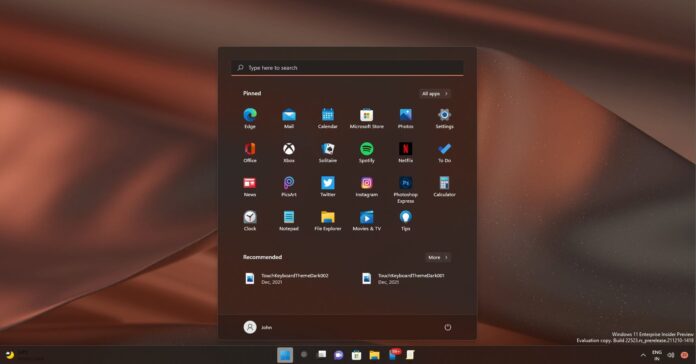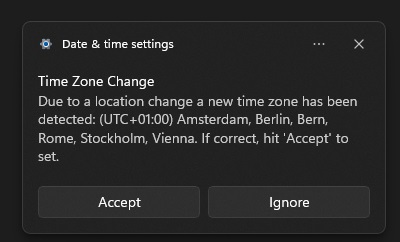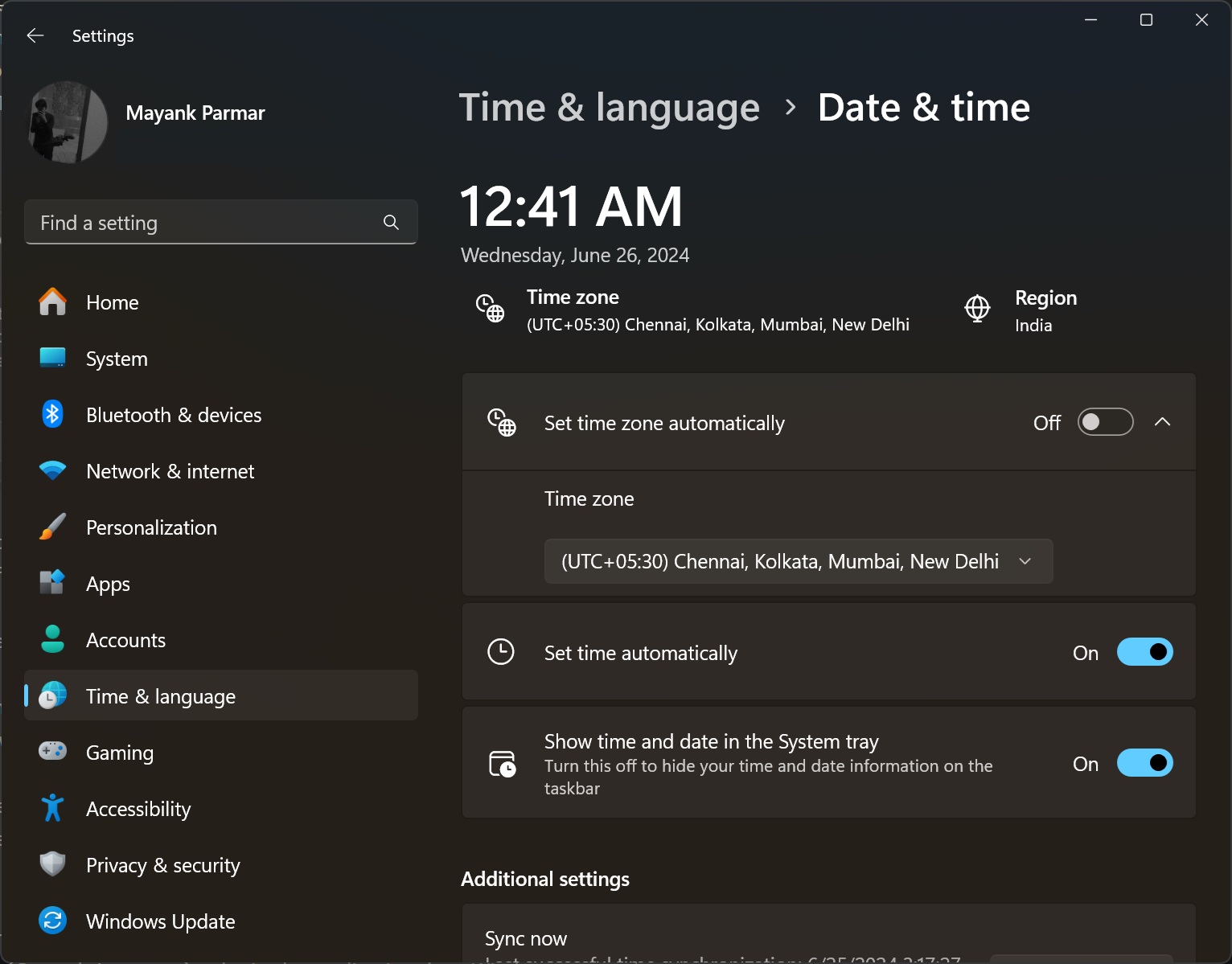Microsoft is aware of a bug in Windows 11 (and Windows 10) that could spam notifications asking for permission to change your timezone. If you’re affected, you’ll get a notification stating that Windows has detected a change in timezone, and it will suggest that you change your timezone to match your location.
“Every day, and multiple times each day, Windows sends a notification asking for permission to change the timezone. This is very irritating because the timezone has no reason to change and has not changed. I’m in France, and the PC has not changed its location. The timezone is CET (CEST in summer),” one of the affected users noted in a post on Feedback Hub.
Windows Latest also received one of these alerts out of nowhere. What’s particularly interesting is that these notifications appear repeatedly in a loop whether or not you select “Accept” or “Ignore” to the request
As shown in the above screenshot, Windows 11’s Date & Time notification warns that a “Time Zone change” has been detected and that “due to a location change, a new time has been detected. If correct, hit Accept to set.”
If you click accept or notification alert, it will open the Date & Time settings page, where everything appears normal.
When Windows Latest searched the official forums, we noticed that users had been flagging the problem for about three weeks.
I asked Microsoft for more details, and one of the support staff told me the company is aware of an issue where timezone change is incorrectly detected in some rare cases. A fix is already being prepared.
“This is the 2nd system where this pop up about me changing time zones has occurred. After I set the date and time (Central time zone), why does Windows think that I have moved 455 miles to the East? Fix your darn OS Microsoft,” another affected user flagged the issue in a Feedback Hub post.
In some rare cases, this has occurred for several months (once each day), but now occurs even more often, about twice each hour (and the frequency is constantly growing).
The good news is that Microsoft is investigating the reports and could publish a server-side fix in the coming days.







